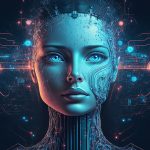Introduction.
AI is everywhere these days. From personal assistants to recommendation systems, it’s shaping how we live, work, and interact.
But did you know you can build your own AI generator? It might sound complex, but it’s more accessible than you think.
Creating your AI tool can be a game-changer for many different projects, from making a fun art generator to creating a personalized chatbot.
The possibilities are endless, and it doesn’t take a team of experts to get started. If you’re curious about how to build your own AI generator, you’re in the right place!
In this article, I’ll break down the basics of how you can create an AI generator, what tools you’ll need, and how to take your first steps.
You don’t need to be a programming wizard to get started, just a willingness to learn and a little bit of patience.
Let’s dive in and unlock the world of AI!
Why Create Your Own AI Generator?
Before we get into the nitty-gritty of how to build one, it’s worth understanding why you might want to create your AI tool in the first place.
AI is transforming industries like healthcare, entertainment, marketing, and more. It’s being used to create personalized content, automate tasks, and solve problems in creative ways.
Here are a few reasons you might want to try your hand at building an AI generator:
- Personalization: AI can help you create something that’s uniquely yours. Whether it’s an art generator that reflects your style or a chatbot that fits your tone, AI allows for high levels of customization.
- Learning and Growth: Building an AI generator is a fantastic way to learn about machine learning, coding, and how AI works. Even if you don’t become an expert, you’ll gain useful skills along the way.
- Creativity Boost: If you’re into creative projects, AI generators can spark new ideas. You can create something entirely new, whether that’s music, images, or stories.
- Efficiency: AI can automate repetitive tasks, saving you time. For example, a text generator can help you write content faster, while an image generator can create visuals without needing a designer.
Getting Started with Your AI Generator
Now that you know why creating your own AI generator is exciting, let’s explore how to make it happen.
The steps might vary depending on what kind of AI generator you’re looking to build, but I’ll guide you through a general approach that applies to most projects.
1. Choose the Right Type of AI Generator
There are many different types of AI generators. You’ll need to pick one that suits your project. Some common ones include:
- Text Generators: These generate written content. You’ve probably seen them in use for chatbots, blog posts, or even code.
- Image Generators: These create images based on input, like DALL·E or Stable Diffusion.
- Music Generators: These generate music tracks, often based on a few parameters like mood or genre.
- Video Generators: AI can even create short video clips or animations.
Think about what you want your AI generator to do. Do you want it to generate text, images, or something else? This decision will guide the tools and frameworks you’ll use.
2. Learn the Basics of Machine Learning
Now, let’s talk about machine learning (ML). It’s the backbone of most AI generators. You don’t need to be a coding expert, but having a basic understanding of machine learning can be helpful.
There are plenty of free resources online to help you learn. Sites like Coursera, edX, and Kaggle offer beginner-friendly courses on machine learning and AI.
You can get started with simple tutorials that walk you through the basics of training models and using pre-built algorithms.
Once you have a basic understanding of how AI models work, you can move on to practical steps like training your model or using pre-built ones.
3. Use Pre-Built Models and Frameworks
The good news is that you don’t need to build everything from scratch. There are a lot of pre-built AI models and frameworks that you can use to speed up the process.
- OpenAI offers models like GPT for text generation. You can use their API to generate content or integrate GPT into your projects.
- TensorFlow and PyTorch are two of the most popular frameworks for building machine learning models. Both offer free tools and libraries that make building AI models more accessible.
- Hugging Face is another great platform, offering pre-trained models and APIs for natural language processing, image generation, and more. They have a huge collection of models you can experiment with.
Using these pre-built models can save you a lot of time and effort while still giving you plenty of flexibility to customize your generator to your needs.
4. Gather Your Data
No matter what kind of AI generator you want to build, you’ll need data to train your model. For example, if you’re creating a text generator, you’ll need a large dataset of text. If you’re building an image generator, you’ll need a dataset of images.
Here are a few options for finding datasets:
- Kaggle has a massive collection of datasets that you can use for free.
- Google Dataset Search helps you find datasets from a variety of sources.
- Open Images Dataset is a great resource for image datasets.
Once you’ve found your dataset, you’ll need to preprocess it to make sure it’s clean and in the right format.
This step might involve tasks like removing noise, normalizing data, or converting images into a specific size or format.
5. Train Your Model
Now comes the fun part: training your AI model. Training an AI model involves feeding it the data and allowing it to learn patterns.
For a text generator, you might train the model on thousands of sentences to help it understand grammar, context, and meaning.
The training process can be time-consuming, depending on the size of your dataset and the complexity of the model. But don’t worry—some tools can make it easier.
- Google Colab is a great resource for running machine learning experiments in the cloud. You can use it for free, and it provides GPU support for faster training.
- AWS SageMaker and Microsoft Azure also offer cloud-based solutions for training AI models.
6. Test and Refine Your Model
Once your model is trained, it’s time to test it. Does it generate what you expect? If not, don’t be discouraged. Refining a model is a normal part of the process.
You might need to adjust the parameters or feed it more data. You can also fine-tune the model using techniques like transfer learning, where you start with a pre-trained model and adjust it for your specific needs.
7. Deploy Your AI Generator
After testing and refining your model, it’s time to deploy your AI generator. Depending on the project, this might mean:
- Building a website where users can interact with your generator.
- Creating an app that lets people use your tool on their phones.
- Integrating it into your business or personal workflow.
You can use tools like Flask or Django for web deployment, or React Native for mobile apps. The key is to make sure the AI model is accessible and easy to use.
FAQs
Do I need to know how to code to create an AI generator?
While coding skills are helpful, you don’t need to be an expert. Some many tools and platforms make it easier for beginners to get started with machine learning.
Can I make an AI generator for free?
Yes, many platforms offer free tools and resources. Google Colab and Hugging Face, for example, provide free access to some AI models and computational power.
How long does it take to build an AI generator?
It depends on the complexity of the generator. A simple text generator might take a few days to build, while something more complex, like an image or video generator, might take weeks or even months.
Further Resources
Conclusion
Creating your AI generator might seem like a big challenge, but it’s achievable with the right tools and a little bit of patience. Whether you want to create something creative or practical, AI offers endless possibilities.
What kind of AI generator would you want to build?





GIPHY App Key not set. Please check settings